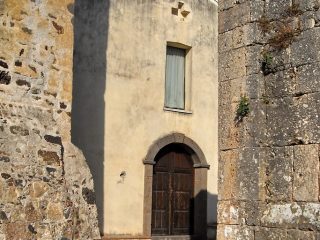The church dedicated to the patron saint of the city of Barcelona is located in the Marina neighbourhood; the imposing building above the square of the same name, overlooks a flight of steps. The building was constructed in 1370, during the Aragonese domination, on the site of a third-century church dedicated to Santa Maria del Porto.
The gabled facade decorated with suspended arches, is enclosed by angular buttresses, while on the right stands the tall square-shaped bell tower with eighteenth century octagonal tower. In the middle of the facade is a large portal with moulded arch and eyebrow and large oculus with stain glass window.
The parish has a large nave split into two aisles by ogival arches, followed by a raised presbytery. Four chapels open out each side of the central nave; they communicate with one another and act as real side naves.
While the star cross vaults, which cover the presbytery and central nave, follow the Catalan-Gothic style, the Baroque altars in the side chapels and the furnishings show off the building’s modernisation work. The chapel is also home to a canvas by Giovanni Marghinotti from 1864 depicting the Last Supper and the eighteenth century wooden polychrome sculpture of Santa Lucia created by Antonio Lonis.
The church is part of the MUTSEU museum system which includes the Archaeological site below, the Treasure Museum and Archives, the church of Santo Sepolcro, with the Monumental Crypt and the adjoining archaeological site, and archaeological excavations of the church of Santa Lucia.





















